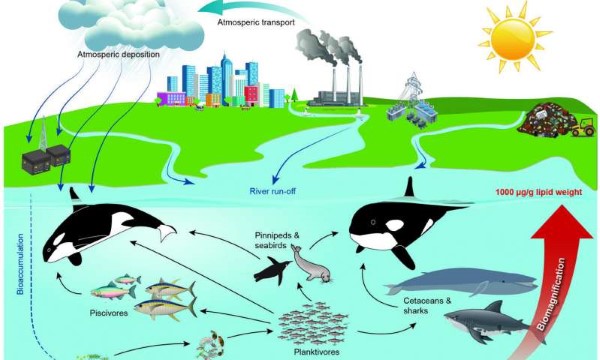Within the next 50 years, current concentrations of PCBs, a Monsanto proprietary product, could drastically reduce the populations of killer whales living in the most contaminated areas.
He is about to end up run over, his mother saves himWithin the next 50 years, current concentrations of PCBs, a Monsanto proprietary product, could drastically reduce the populations of killer whales living in the most contaminated areas.
More than forty years after the first steps for ban the use of PCBs, these persistent pollutants with dioxin-like toxicity are still a deadly threat to animals at the top of the food chain. A new alarm was launched by the study conducted by scientists at the University of Aarhus, in Denmark, according to which i polychlorinated biphenyl could lead to the disappearance of half of the world's populations of killer whales from the most heavily contaminated areas in a period of only 30-50 years.
The orca is one of the most widespread mammals on Earth and is found in all oceans of the world from pole to pole. But today only the populations living in less polluted areas have large numbers of individuals. Those that feed mainly on marine mammals and large fish are most at risk like tuna and sharks, while those which feed mainly on small fish such as herring are less threatened.
Killer whales (Orcinus orca) are the last link in a long food chain and are among the mammals with the highest level of PCBs (polychlorinated biphenyls) in their tissues. The researchers measured values of up to 1300 milligrams per kilo in their fat. For comparison, a large number of studies show that animals with PCB levels as low as 50 milligrams per pound of tissue can show signs of infertility and severe impacts on the immune system.
Together with colleagues from other international universities and institutes, researchers at Aarhus University have documented that the number of killer whales is rapidly declining in 10 of the 19 populations analyzed and that the species could disappear entirely from several areas within a few decades. .
The research team, which includes researchers from the United States, Canada, England, Greenland, Iceland and Denmark, looked at all the existing literature and compared all the data with their most recent results, obtaining information on additional PCB levels. of 350 individual killer whales in all, the largest number ever studied. Applying a variety of models, the researchers then predicted the effects of PCBs on offspring numbers, the immune system and killer whales' mortality over a 100-year period.

Gallery
It was found that the most at risk are those living in heavily contaminated areas such as the waters of Brazil, the Strait of Gibraltar and the United Kingdom. Around the British Isles, researchers estimate that the remaining population is fewer than 10 orcas.
“The results are amazing. We see that over half of the killer whale populations studied worldwide are severely affected by PCBs " he said Jean-Pierre Desforges of the University of Aarhus, who led the investigation.
“In these areas, we rarely see newborn killer whales,” continues Ailsa Hall of the Marine Mammal Research Unit in Scotland.
“As the effects have been recognized for more than 50 years, it is frightening to see that the models predict a high risk of population collapse in these areas within a period of 30-40 years,” says Jean-Pierre Desforges.
PCBs accumulate in the food chain
PCBs can have a devastating effect on killer whales' reproduction and immune systems. Those whose diets include seals and large fish such as tuna and sharks accumulate PCBs and other pollutants and pass them to the next levels of the food chain.
I polychlorinated biphenyl have been used around the world since the 30s. More than one million tons were produced and used, among other things, in electrical and plastic components. Along with DDT and other organic pesticides, PCBs have spread widely in the oceans. In the 70s and 80s, it was banned in some countries and in 2004, through the Stockholm Convention, over 90 states pledged to phase out large reserves of PCBs.
An orca could live to be 60-70 years old, and although the world took the first steps to phase out PCBs more than 40 years ago, the levels in their bodies are still very high.
Even the little ones are at risk
Unfortunately, these substances slowly degrade in the environment. In addition, they are passed on from mother orca to her offspring through high-fat milk. This means that the dangerous substances remain in the bodies of the animals, instead of being released into the environment where they eventually settle or degrade.
According to the researchers, this means that the efforts made so far have not been sufficient to avoid the accumulation of PCBs in some species.
A little one good news there is. In the oceans around the Faroe Islands, Iceland, Norway, Alaska and the Antarctic, the outlook is not so bleak. Here the populations of killer whales are growing and these animals are healthy and will continue to be healthy throughout the next century.
The study was published in Science.
READ also:
- Lulu, the orca made sterile and killed by the highest levels of pollutants ever recorded
- Orca cries by the pool: the true face of captivity (VIDEO)
Francesca Mancuso


























